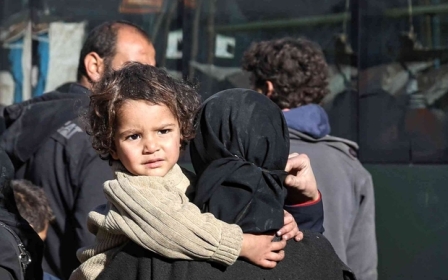The terror forecast for 2017

It’s that time of year when columnists make their predictions for the New Year. While this columnist enjoys placing a wager on uncontrollable future events, it must also be said he has a lousy track record of enjoying any return on his bets.
To help me overcome my predictive success deficit, I have summoned the world’s leading terrorism experts to provide our readers with their forecasts and analysis of the jihadist threat for 2017.
Before we look forward, however, it would be prudent to look back on 2016 – a year that brought Europe its highest number of terror deaths in more than a decade, and one in which many other parts of the world continued suffering at the hands of terrorist groups and insurgencies.
All in all, there were a total of 1,176 attacks resulting in 15,525 fatalities globally – 1 January through 16 December 2016.
Notable were Western Europe and Turkey – both non-conflict zones that have experienced more terrorist attacks in 2016 than in any previous year.
Meanwhile, in the US, jihadist groups or individuals have killed fewer than 100 since the 9/11 attacks, yet the fear of terrorism continues to be a dominant driver in political discourse and policy making.
Al-Qaeda's comeback
So, what of 2017? What new extremist groups will emerge from failed and failing states? What new actors will mimic and replicate the barbarity of the Islamic State (IS) and al-Qaeda? What are the future trends to look for in jihadist terrorism?
A new report “The Jihadi Threat: ISIS, al-Qaeda and Beyond,” compiled by the United States Institute of Peace and the Wilson Center in Washington DC, identifies six future scenarios for IS: a diminished status quo, resulting in a retreat to the desert and a return of the insurgent tactics it used in Iraq between 2007 and 2011, while also continuing to eye opportunities to pull off spectacular attacks in Europe and the US.
The authors also foresee al-Qaeda, having played the “pragmatic long game,” well positioned to restore the prestige it has lost among other militant groups thanks to the rise of IS.
In this sense, al-Qaeda is well positioned to snare fighters who have become disillusioned with the degrading of IS capabilities, and the group’s loss of territory.
Worryingly, the report observes that al-Qaeda is now in its third generation, becoming increasingly violent and more extreme with each subsequent generation, which is an especially troubling trend given many jihadists in Iraq and Syria are expected to return to their respective countries upon the expected cessation of conflicts in the Levant.
MORE: Tunisia needs a deradicalisation strategy for returning 'terrorists'
What's to come
While the media and political opportunists are often guilty of overplaying terrorism threats for ratings and votes, the drivers that fuel violent extremism – namely weak/failing states, conflict, and debilitating socio-economic conditions – are unlikely to go away any time soon, and thus neither is violent extremism.
To gain a further insight into what 2017 may have in store, I posed some questions to four of the world’s leading terrorism scholars: Mubin Shaikh, a former militant-turned-deradicalisation expert and author of The Undercover Jihadist; Amarnath Amarasingam, a fellow at the Programme on Extremism at George Washington University; Mia Bloom, a Professor of Communication at Georgia State University, and author of Dying to Kill: The Allure of Suicide Terror; and Bart Schuurman, a research fellow at the International Center for Counter Terrorism – The Hague.
CJ: How would you describe the prospects for IS in Iraq and Syria for 2017?
MIA: The term I’ve heard used is “aggressive hibernation,” in all likelihood, IS will retreat into Sunni populations in Iraq and Syria, but it will evolve again.
AMARNATH: I think we will see continued rivalry between IS and al-Qaeda in Syria as well as other parts of the world. We will see IS attempt to entrench itself deeper in parts of South Asia and absorb older jihadi groups, and we will likely see the complex interplay between rebel groups and jihadi groups continue to play out in Syria. The conflict in Syria is far from over, and as we have seen, the conflict there will continue to have global ramifications.
BART: In the short-term, I think the military setbacks suffered by IS will increase its motivation, and that of its affiliates, to conduct acts of terrorism as retaliation and to demonstrate continued strength to opponents and supporters alike.
If the current trajectory continues and IS loses most of its current territorial footholds in Syria, Iraq, Libya and elsewhere, then there may be an increased emphasis on "homegrown" plots akin to those seen after al-Qaeda's ability to organise and facilitate international terrorism dwindled due to the invasion of Afghanistan
MORE: IS's new tactic: attacks to discourage the West from welcoming refugees
MUBIN: ISIS will continue to lose territory, and the jihdadist threat will continue to become more diffuse as IS and al-Qaeda seek to outbid each other for primacy among jihadists.
CJ: How would you describe the threat to the West in 2017?
MIA: I foresee the situation in the US will mirror Europe (UK, France) in which Muslim populations will increasingly feel threatened by the emboldening of the extreme right and Islamophobia from Trump's administration.
In this case it would mean more disaffected populations, but the most significant impact will be that people who would have called the authorities before won’t call the "tip" in, and since we know the vast majority of domestic plots were prevented by tips of confidential informants, this becomes a major risk.
Once we have alienated the [Muslim] population, we will eliminate any incentive to help, report, or call the FBI.
AMARNATH: We will likely continue to see lone actor attacks, which are inspired by the group and perhaps even more orchestrated attacks like Paris in November 2015. It is difficult to say what IS will do as they feel the pinch in the territories they control.
The other important dynamic, of course, is the [inauguration] of Trump on January 20th. His rhetoric thus far has been deeply alienating to many Muslims and his lack of understanding of geopolitics has the potential to affect these different arenas in different ways. We simply don't know what he has planned other than "something great quickly", but there is potential to make things a lot worse. Much of this, though, is still unclear.
BART: The homegrown threat appears to be greater than it was in the early 2000s because of the larger number of foreign fighters who have - or may in the near future - return to their countries of origin. The first iteration of the homegrown threat was sometimes limited in its ability to successfully conduct acts of terrorism because the Internet was rarely a viable substitute for actual military training and experience. The desensitisation to violence and paramilitary training received by IS fighters makes them a potentially far more serious threat.
Tactically, I think the attacks in Nice and Paris especially have demonstrated a shift toward more straightforward methods of attack that - unfortunately - can prove very effective. Al-Qaeda in the Arabian Peninsula [a faction of al-Qaeda primarily active in Yemen and Saudi Arabia] and others have for years been urging their followers to do whatever they can with whatever means they have available.
For a long time, surprisingly few people seemed to heed this call. But the demonstrated effectiveness of such attacks in recent years is likely to become a template for would-be terrorists into the near future.
MUBIN: The jihadist threat will continue on its trajectory of inspiring and committing attacks in Europe and, in doing so, cleaving the societies in which Muslims live with non-Muslims apart. This will contribute even more to rising radicalisation of white supremacists who have ironically, come to promote the same narratives of jihadists that, "Islam orders you to convert or die."
Among the more extreme manifestations of their violence, we may well see the first female or child suicide bomber and on the side of white supremacists, an increase in attacks on mosques and Muslims at random. This will push societies into their respective "tribes" and will threaten the sense of tolerance that Western societies have promoted
The future is unknown
While these forecasts and analyses are grounded in quantified and qualified empirical research, and remain the best forecasts available for counter-terrorism policy makers, the reality is no one really knows what comes next.
The reality is extremist organisations, such as IS and al-Qaeda, morph and adapt strategies and tactics at the literal speed of light.
The reality is, as the authors of the aforementioned report observe, “Jihadists may always be one step ahead.”
- CJ Werleman is the author of Crucifying America, God Hates You. Hate Him Back, Koran Curious, and is the host of Foreign Object. Follow him on twitter: @cjwerleman
The views expressed in this article belong to the author and do not necessarily reflect the editorial policy of Middle East Eye.
Photo: An Islamic State fighter holding a flag (AFP)
This article is available in French on Middle East Eye French edition.
Stay informed with MEE's newsletters
Sign up to get the latest alerts, insights and analysis, starting with Turkey Unpacked
Middle East Eye delivers independent and unrivalled coverage and analysis of the Middle East, North Africa and beyond. To learn more about republishing this content and the associated fees, please fill out this form. More about MEE can be found here.





